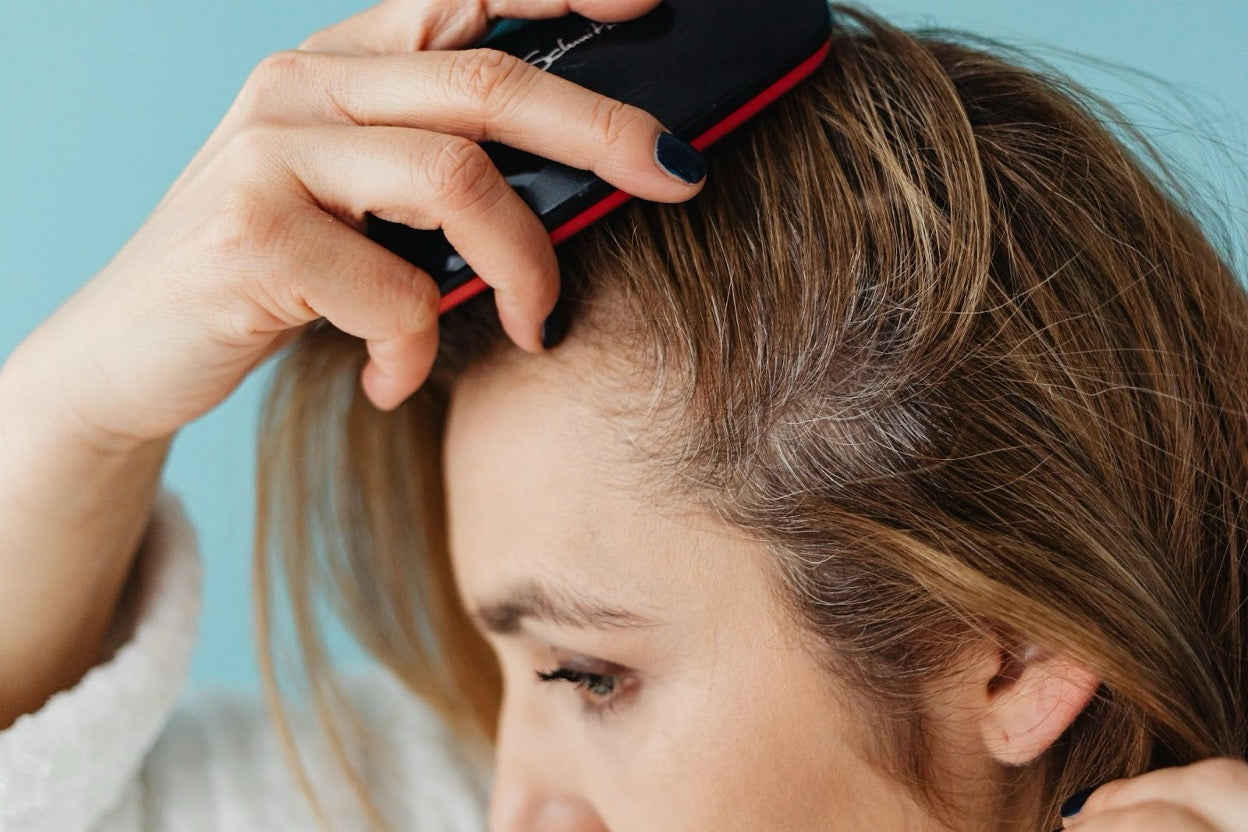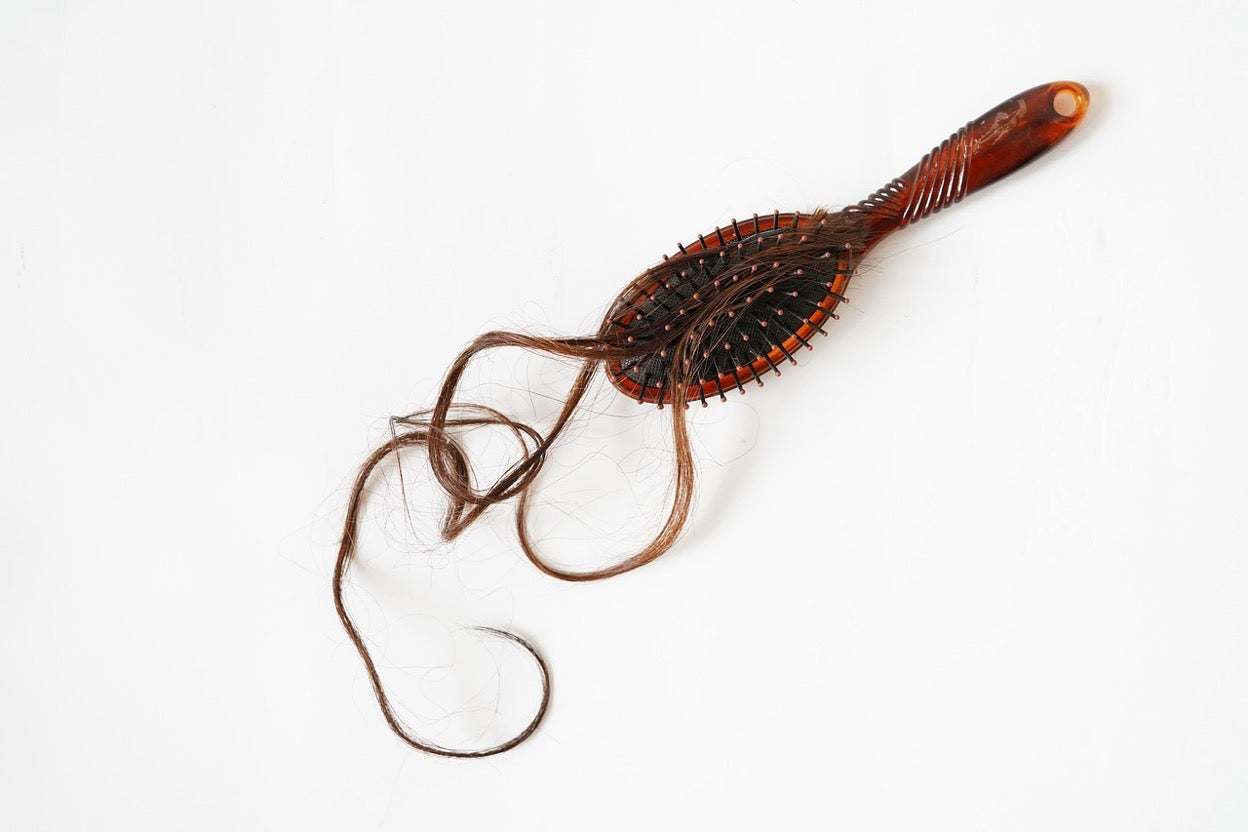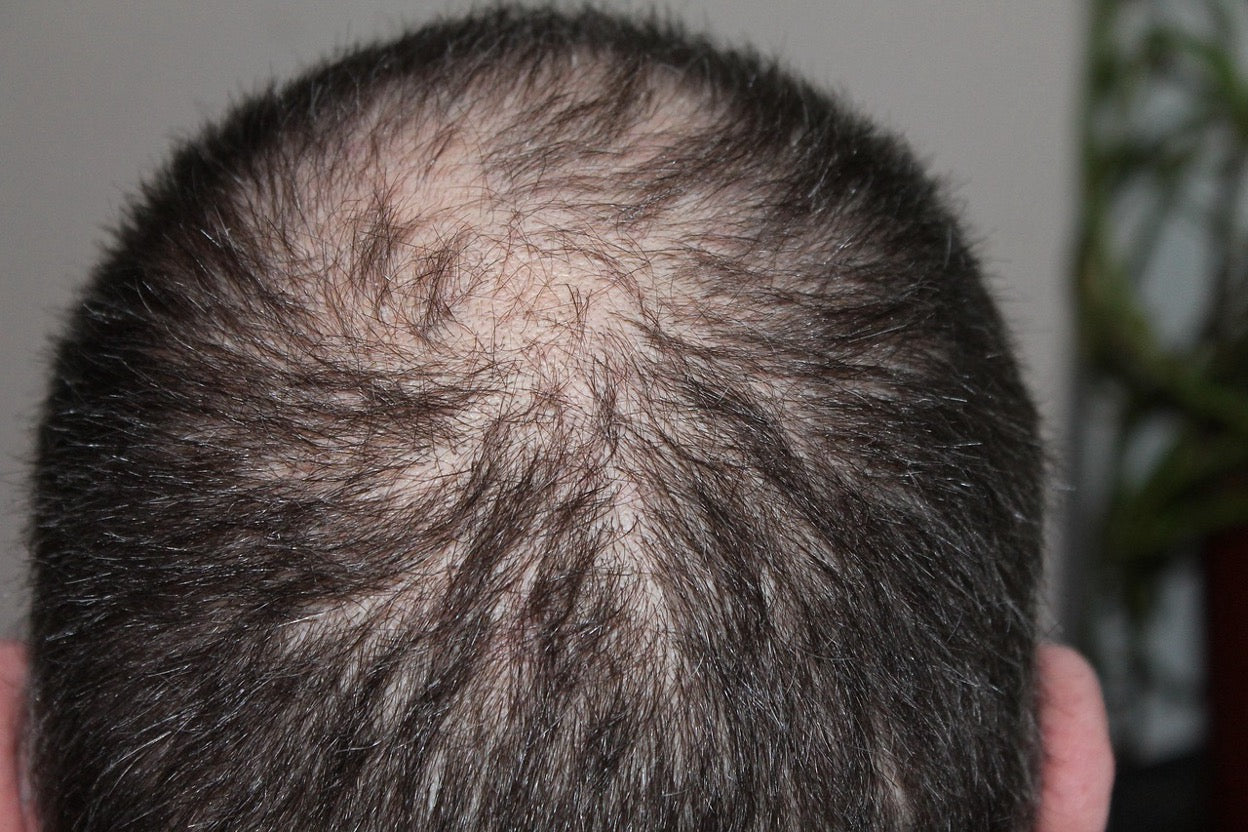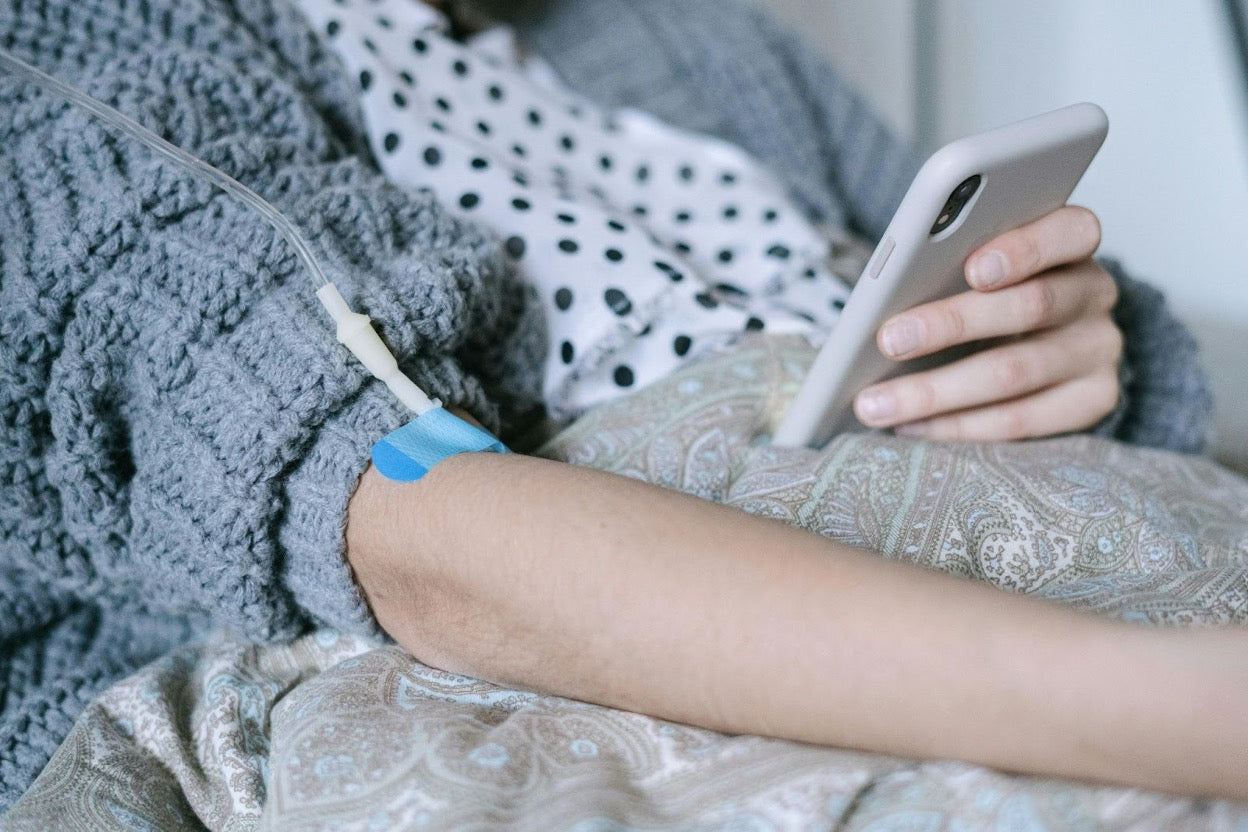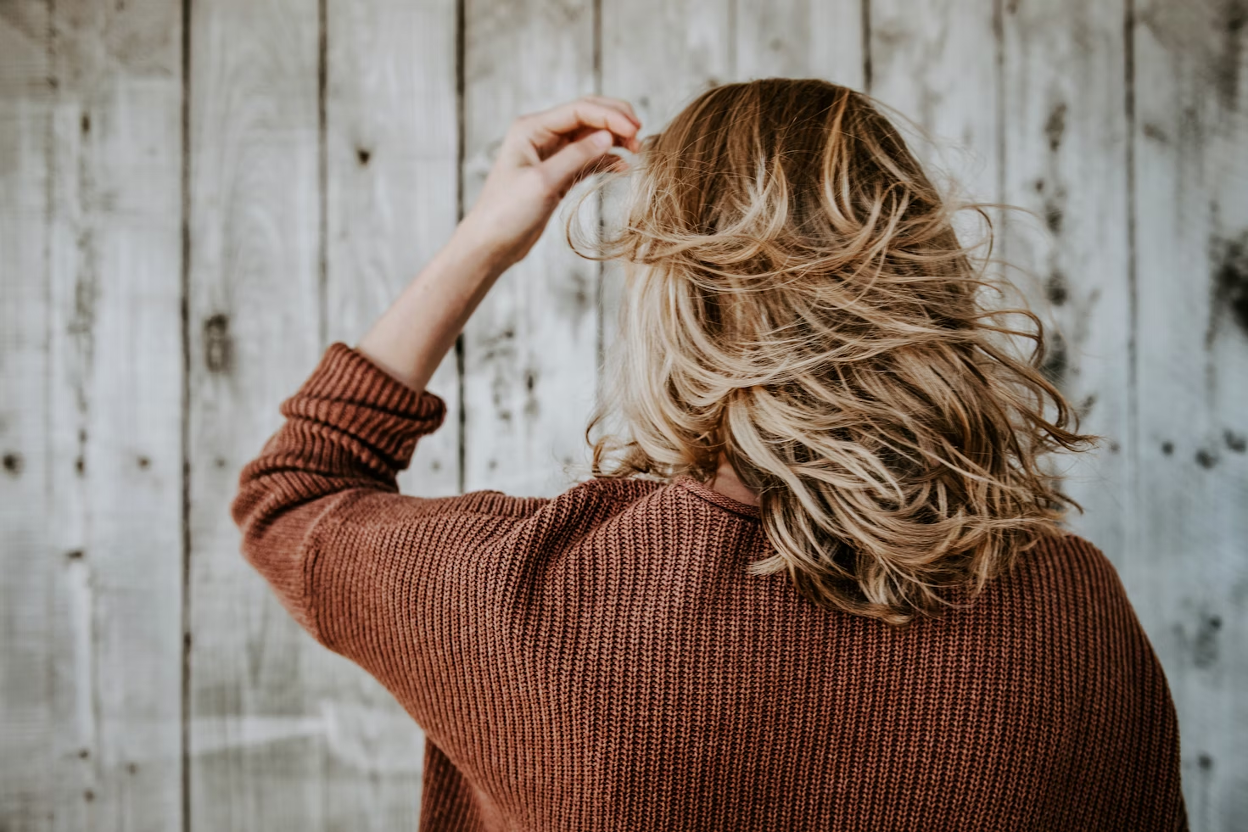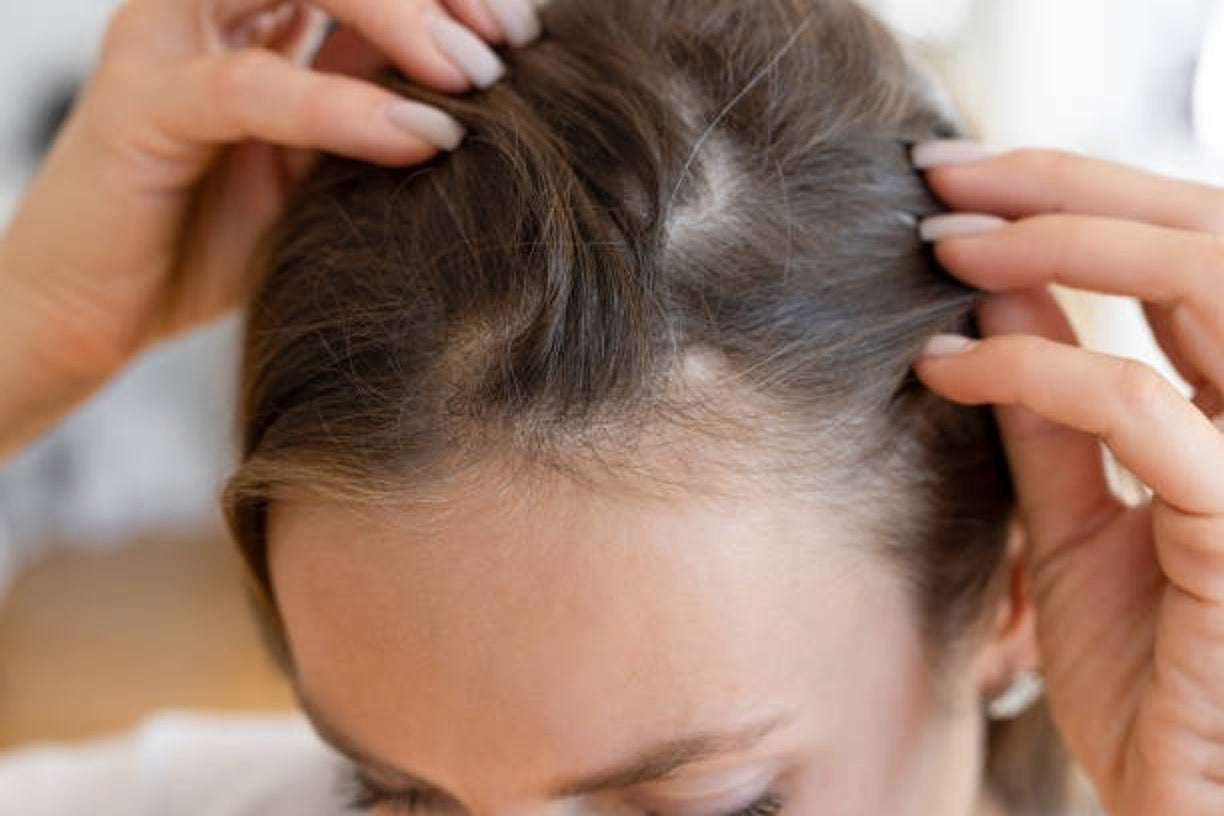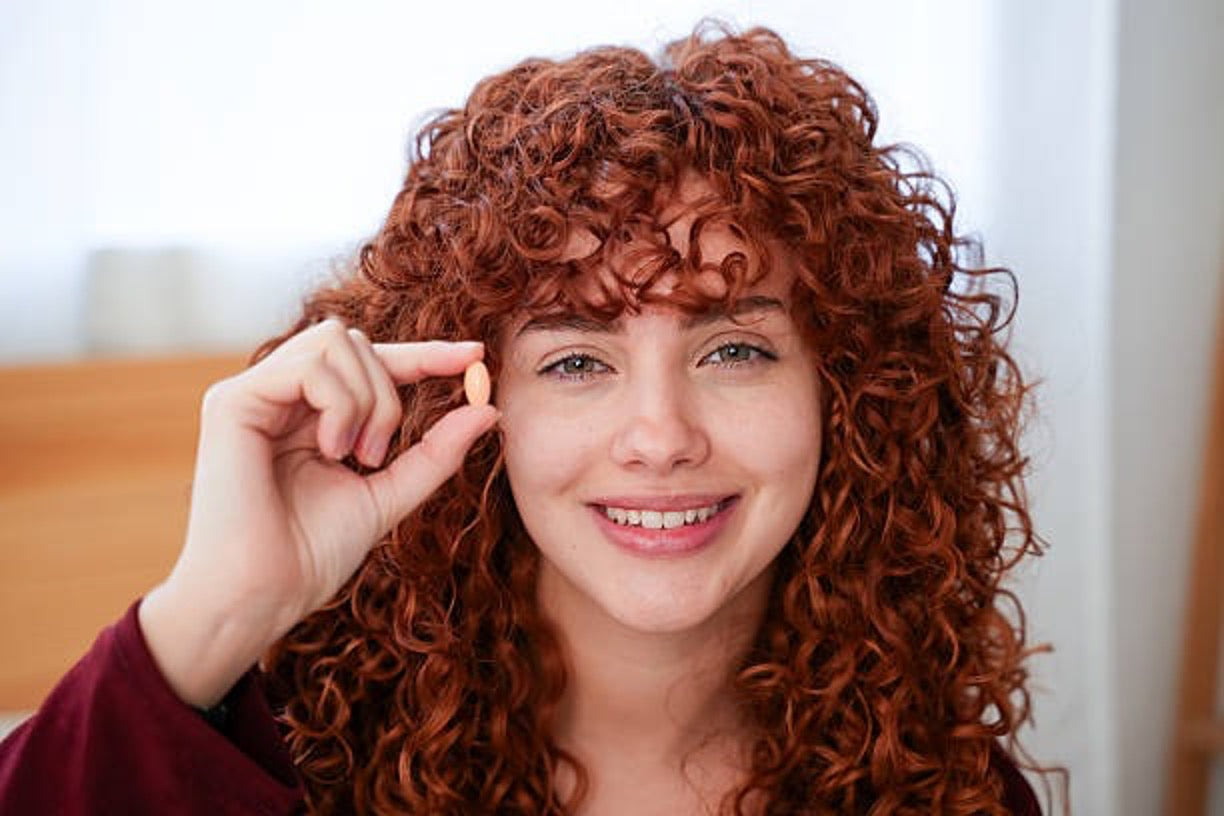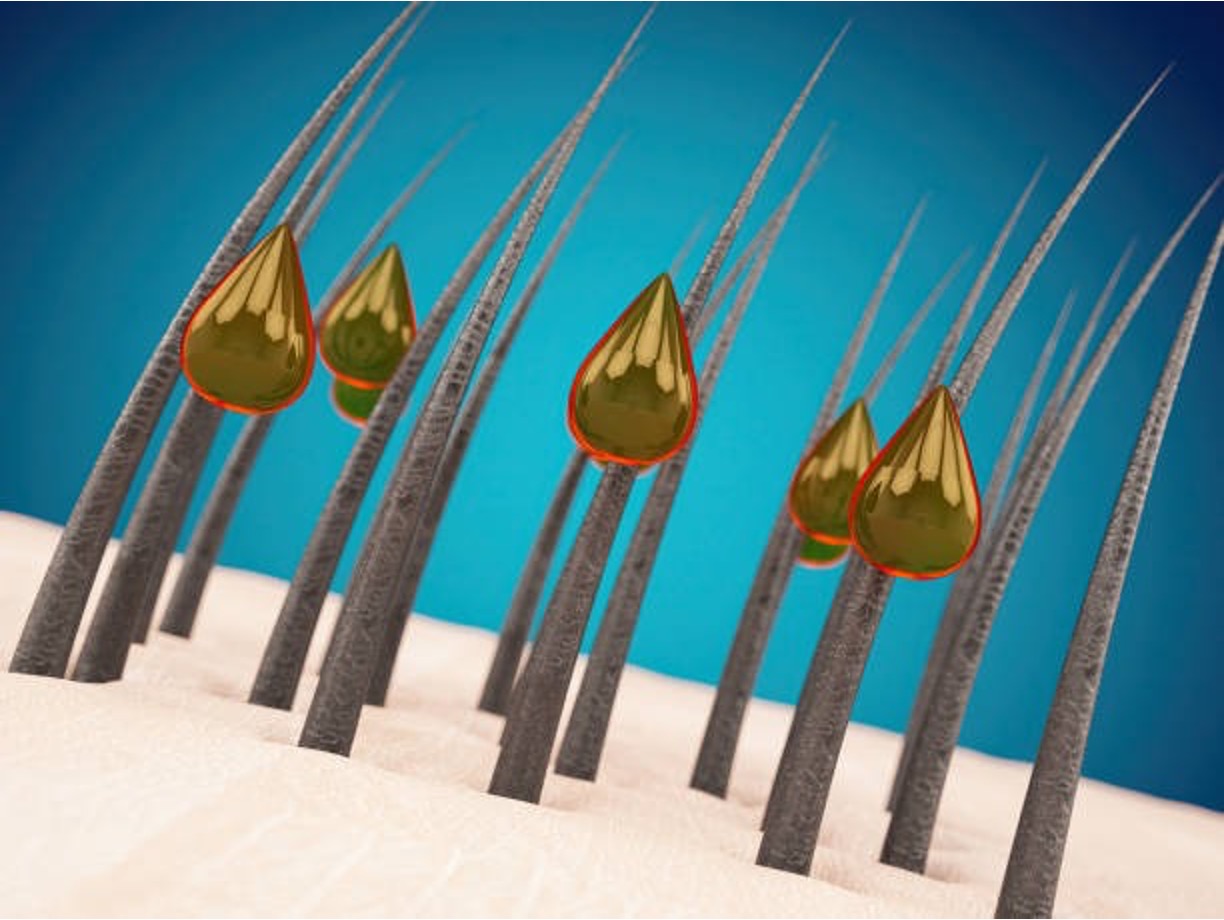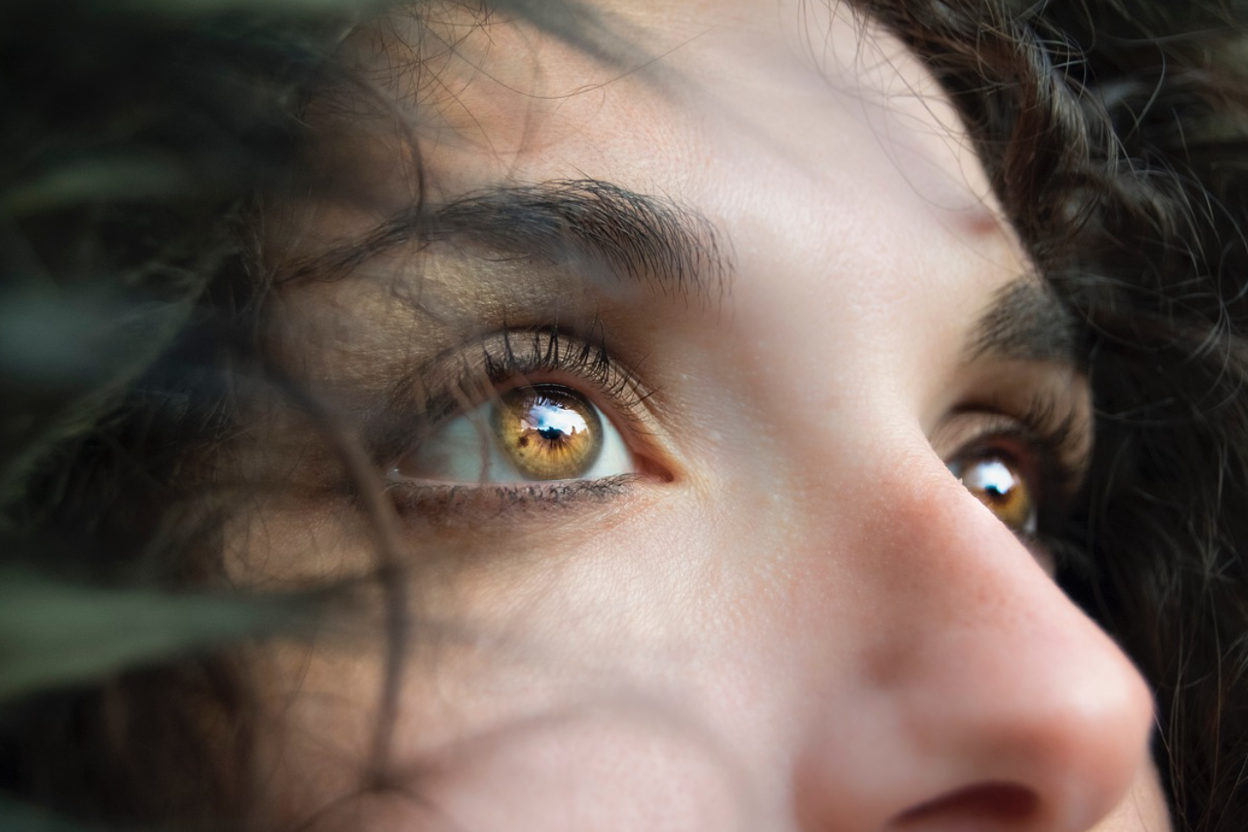Low-Level Light Therapy (LLLT) for Hair Loss: Results, Cost & Side Effects
BY TRYBELLO
Jul 7, 2025

Key Takeaways
- Low-Level Light Therapy (LLLT) stimulates hair follicles using red light wavelengths (typically 630–670 nm), promoting increased blood flow and cellular energy production.
- Most LLLT users begin seeing noticeable results after 3–4 months of consistent treatment, with optimal results appearing around the 6-month mark.
- Home LLLT devices range from $200 to $3,000, making them a significant but one-time investment compared to ongoing clinical treatments.
- LLLT works best for androgenetic alopecia (pattern hair loss) in its early to middle stages and may be more effective when combined with other hair loss treatments.
- For those seeking natural, science-backed hair growth solutions, Trybello Hair Helper Spray offers an affordable alternative or complement to LLLT. It features clinically-proven ingredients like biotin, castor oil, and caffeine with a 120-day growth guarantee.
LLLT Hair Growth Science
Low-Level Light Therapy (LLLT) works through a fascinating biological process called photobiomodulation. This isn't just fancy jargon, it describes how specific wavelengths of light can trigger cellular reactions in your scalp that promote hair growth.
When the low-level light penetrates your scalp tissue, it's absorbed by chromophores (light-accepting molecules) in your cells, particularly in the mitochondria, the powerhouses of your cells.
This absorption kicks off a cascade of biological events that ultimately benefit your hair follicles.
Clinical Evidence Support
Multiple peer-reviewed studies have demonstrated LLLT's effectiveness for certain types of hair loss.
A 2014 meta-analysis published in Lasers in Medical Science reviewed several randomized controlled trials and found that LLLT treatments produced a significant increase in hair density and overall hair regrowth in people with androgenetic alopecia.
This result has led to FDA clearance for several LLLT devices specifically for treating pattern hair loss, providing scientific credibility to this technology.
“Doctor-Approved Natural Spray Rapidly Boosts Growth & Thickness.
Why 100,000+ Women Are Switching to The TryBello All-Natural Solution!"
Join over 100,000 happy customers who’ve transformed their hair with our natural, doctor-formulated spray—rated 4.8/5 by more than 40,000 real users.
Proven Natural Ingredients
- • Caffeine Extract – Naturally blocks DHT and boosts blood flow to hair follicles
- • Biotin – Absorbs directly through the scalp for maximum results—no pills needed
- • Castor Oil – Soothes inflammation and locks in deep, lasting moisture
- • Rice Water Extract – Packed with proteins and minerals to strengthen hair and reduce shedding
Get Visible Results in 12 Weeks
- • Up to 45% increase in hair thickness
- • Reduces shedding and unclogs hair-draining nightmares
- • Supports regrowth in thinning areas
- • Leaves hair soft, shiny, and full of life
Ironclad 120-Day Growth Guarantee
No results after 4 months? Get 100% of your money back—no questions asked.


★★★★★
I started using this twice a day because I noticed my hairline receding. Didn’t pay attention to track results, now my stylist told me my hair has grown a lot since my last root touch up. I'm impressed! - Bailey

Real Results Timeline

When starting LLLT treatment, having realistic expectations about the timeline for results is crucial for staying motivated through the process.
First Month Changes
During your first month of LLLT treatment, don't expect to see dramatic hair growth, this initial phase is about preparing the foundation. Many users report subtle improvements in scalp health, including reduced irritation, less flaking, and a healthier scalp.
You might notice decreased hair shedding when washing or brushing your hair, which is an encouraging early sign. While these changes might seem minor, they indicate that the therapy is beginning to work at the cellular level, creating an environment conducive to new growth.
3-Month Progress
By the three-month mark, you should begin noticing more tangible improvements in your hair. Fine, vellus hairs (the tiny, colorless hairs) start appearing in previously thinning areas, creating a subtle filling-in effect. Your existing hair may appear thicker and more vibrant as circulation improvements deliver more nutrients to the follicles.
This milestone is when many people start to feel encouraged by visible progress. Photos taken at baseline compared to the three-month point often show measurable differences, even if they're not dramatic.
6-Month Transformations
The six-month mark is when LLLT users typically see the most impressive results. By this point, many report a noticeable increase in hair density, with previously thinning areas showing significant improvement.
Your hair's overall quality will likely be better, more shine, improved texture, and greater resilience. This is when before-and-after photos really demonstrate the therapy's effectiveness, showing visible progress that friends and family might comment on.
Who Sees Best Results
LLLT doesn't work equally for everyone. Those in early to middle stages of hair loss typically see the best results, as the therapy works most effectively on follicles that are weakened but not completely dormant.
People with androgenetic alopecia (male or female pattern baldness) respond particularly well to LLLT. Your hair type can also impact results, those with lighter hair colors may see slightly better outcomes due to less light absorption by melanin.
LLLT Device Options
Laser Caps
Laser caps have become one of the most popular LLLT options, offering full scalp coverage while allowing freedom of movement during treatment sessions. Laser caps contain numerous laser diodes (typically 80–272) strategically positioned to treat the entire scalp simultaneously.
The hands-free design means you can continue with other activities during your treatment sessions, read, work on your computer, or even do light household chores.
They typically operate on rechargeable batteries and come with controllers that manage treatment timing automatically. Premium models offer features like programmable sessions, automatic shut-off, and even mobile app integration to track your treatment progress.
The main drawback is the higher upfront cost compared to other LLLT devices, though this investment often proves economical over time compared to professional treatments.
Helmets vs. Combs
Laser helmets provide similar coverage to caps but usually have a more rigid structure and must be used while stationary. They often feature more powerful diodes and additional technologies like scalp cooling or vibration therapy. The trade-off is less mobility during treatment sessions compared to caps.
Laser combs, on the other hand, are the most affordable entry point to LLLT but require manual operation.

You must methodically move the comb across your scalp to ensure all areas receive treatment.
This makes sessions more labor-intensive and time-consuming. Combs typically have fewer diodes (9–16) than caps or helmets, which means less coverage per pass. However, they're portable, simple to use, and still clinically proven to stimulate hair growth when used properly.
Professional Treatments
Clinical LLLT treatments conducted by dermatologists or hair restoration specialists offer high-powered professional-grade laser exposure. These sessions typically use panel systems where you sit under a dome of red light that covers your entire scalp at once.
Professional treatments often employ more powerful lasers than home devices and may be combined with complementary therapies like scalp massages or topical treatments for enhanced results.
However, they come with significant downsides: inconvenience of regular office visits, higher cumulative costs over time, and the same need for long-term commitment as home treatments.

Many people start with professional sessions to gauge their response to LLLT before investing in a home device for maintenance.
Treatment Costs Breakdown
Home Device Prices
Entry-level laser combs typically range from $200–$500, making them the most affordable option but requiring more effort during use.
Mid-range laser caps and helmets generally cost between $500–$1,200 and offer better coverage and convenience than combs.
Premium devices with advanced features like higher diode counts (200+ lasers), app connectivity, and extended warranties can cost anywhere from $1,500 to $3,000.
Clinic Session Fees
Professional LLLT treatments conducted in dermatology offices or hair restoration clinics typically cost between $100 to $200 per session.
These treatments usually require 2–3 sessions per week during the initial phase, potentially resulting in monthly costs of $800–$2,400 depending on frequency and your location's market rates.
Insurance Coverage Reality
Unfortunately, most health insurance plans classify laser therapy for hair loss as a cosmetic treatment and don't provide coverage.
Some providers may offer partial reimbursement if hair loss is related to a medical condition like alopecia areata, but this is rare. Always check with your insurance provider about your specific policy details before assuming any coverage.
Proper Usage Protocol
Treatment Frequency
Most LLLT devices recommend treatment sessions 3–4 times per week, spaced evenly throughout the week. This frequency provides sufficient stimulation while allowing your scalp tissue time to respond between sessions.
Over-treating won't accelerate results and could potentially reduce effectiveness by causing cellular fatigue.
Combining With Other Treatments
Many dermatologists recommend a multi-therapy approach for maximum effectiveness. Topical minoxidil can be applied approximately 30 minutes before or after LLLT sessions, allowing the improved blood flow from light therapy to potentially enhance minoxidil absorption.
Oral medications like finasteride or dutasteride, which block DHT production, tackle the hormonal causes of hair loss while LLLT addresses the cellular energy and blood flow aspects.
Nutritional supplements like Trybello Hair Helper Spray and supplements that support hair health, can provide the building blocks your newly energized follicles need to produce stronger hair.
Side Effect Profile
Common Reactions
The most frequently reported side effect is mild scalp tingling or warming during treatment sessions. This sensation is typically described as mild and often dissipates after the first few weeks of use as your scalp adapts to the therapy.
Some users experience temporary scalp itchiness or mild redness immediately following treatment, which generally resolves within a few hours. These reactions are considered normal responses to increased blood flow and cellular activity rather than concerning adverse effects.
Rare Complications
Serious side effects from LLLT are extremely rare when devices are used as directed. A very small number of users may experience headaches if they're particularly sensitive to light therapy.
Using the device earlier in the day rather than before bed can help mitigate this effect if it occurs. Individuals with certain photosensitizing conditions or those taking medications that increase sensitivity to light should consult their physician before beginning treatment.
Trybello's Approach to Comprehensive Hair Restoration
At Trybello, we understand that effective hair restoration often requires a multi-faceted approach. And while LLLT is an exciting technological advancement in hair growth therapy, we believe in providing accessible, science-backed solutions that work for everyone's budget and lifestyle.
Our Bello Hair Helper Spray is a perfect complement to LLLT therapy or an excellent standalone solution for those seeking natural hair growth stimulation. Formulated with clinically-proven ingredients including biotin, castor oil, and caffeine, our spray delivers targeted nutrition directly where it's needed most.

The plant-based formula works without hormones, silicones, or parabens, making it safe for daily use and compatible with any hair care routine.
Here’s how you can use our spray for maximum benefits:
- Step 1: Target thinning areas by spraying 1-2 pumps directly onto your scalp—no pre-washing required.
- Step 2: Massage gently into scalp and allow 30+ minutes for absorption.
Use as an overnight treatment (rinse in the morning) or leave in for all-day protection. Apply once daily for maintenance or twice daily for accelerated growth.
Our 120-day growth guarantee means you can start your hair restoration journey with complete confidence—see real results or get your full refund!
At Trybello, we're committed to supporting your hair growth journey with products that deliver real results at accessible prices, because everyone deserves to feel confident in their own skin.
Frequently Asked Questions (FAQs)
Trending Topics
See our latests posts #TRYBELLO


